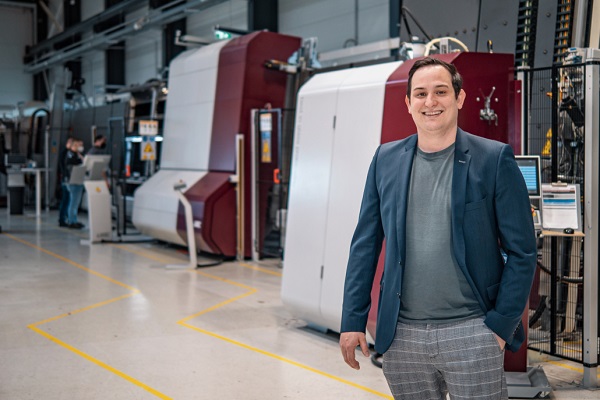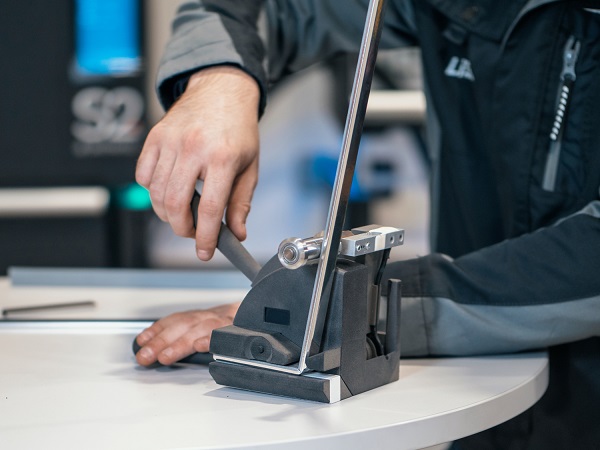For one yr, the workforce of Benjamin Kaubeck has additionally been utilizing a Swiss system to this finish: the Sintratec S2.
FLAT GLASS PROCESSING MADE IN AUSTRIA
With over 20 subsidiaries and 1250 staff worldwide, the LiSEC group is the worldwide market chief for all-in-one flat glass processing and ending options. On the headquarters in Seitenstetten, Austria, revolutionary machines for the glass trade are developed and produced, together with the coaching of recent staff. The apprentice workshop is below the course of Benjamin Kaubeck, who additionally began his profession 16 years in the past as an apprentice at LiSEC. «Our imaginative and prescient is to remain on the chopping fringe of expertise with apprentice coaching and to ascertain a division with ever new applied sciences», Kaubeck explains.

AN ADVANCED APPRENTICESHIP
Along with subtractive CNC milling machines and lathes, additive manufacturing has additionally been integrated in LiSEC’s coaching workshop for round 3 years. The excessive diploma of freedom of type specifically sparks revolutionary concepts. Accordingly, the aspiring engineers use the 3D printers to supply prototypes, in addition to small to medium-sized sequence for the manufacturing facility. «We wish our apprentices to find out about 3D printing processes at an early stage in order that they’ll maintain their designs of their arms and put them to good use within the shortest time potential», emphasizes Kaubeck. For the pinnacle of apprenticeship coaching, 3D printing is a necessity in a contemporary machine park.


SPARE PARTS FROM THE 3D PRINTER
Alex Wieser is answerable for the 3D printing division at LiSEC. «We use FDM printing for practical prototypes – we swap to selective laser sintering (SLS) as quickly as we’d like a great end, in addition to dimensionally correct and form-stable components», {the electrical} engineering teacher explains. To satisfy rising calls for on the manufacturing facility, LiSEC invested in a Sintratec S2 system a couple of yr in the past. «With the SLS course of, we produce lots of spare components, which permits us to help our clients sooner – and that’s our essential objective», says Benjamin Kaubeck.


SLS COMPONENTS ON PROCESSING MACHINES
The Sintratec S2 is used virtually every day at LiSEC to supply prototypes and medium-sized manufacturing components utilizing the sturdy PA12 materials. For instance, a bending check rig was constructed and printed to measure the drive required to deform an aluminum body. Additionally put in on the glass processing machines are varied covers, cable clamps, or brackets that had been realized with the Sintratec S2. One other instance could be discovered at a filling plant, the place granulate is inserted into glass frames for insulation. Right here, the workforce sintered the molecular containers to check their very own new shapes.






A FOUNDATION FOR INNOVATION
After a couple of yr in use, the economic 3D printing answer has satisfied the instructors at LiSEC. «We’re positively stunned by the Sintratec expertise and really enthusiastic concerning the cylindrical construct quantity in addition to the dealing with of the machine», emphasizes Benjamin Kaubeck. «Our necessities are clearly met by the Sintratec S2, and we’re very happy with the product – high quality and price-performance merely match», Alex Wieser provides. The introduction of the expandable SLS system impressively exhibits the way it can lay an vital basis for brand new improvements inside a manufacturing. Alex Wieser summarizes: «I see 3D printing as an integral a part of any industrial sector – it’s merely the longer term!»

 “The SLS course of by Sintratec meets our key necessities – particularly tolerances, dimensional stability and warmth resistance.”
“The SLS course of by Sintratec meets our key necessities – particularly tolerances, dimensional stability and warmth resistance.”
Benjamin Kaubeck
Head of Apprenticeship Coaching
LiSEC
www.lisec.com